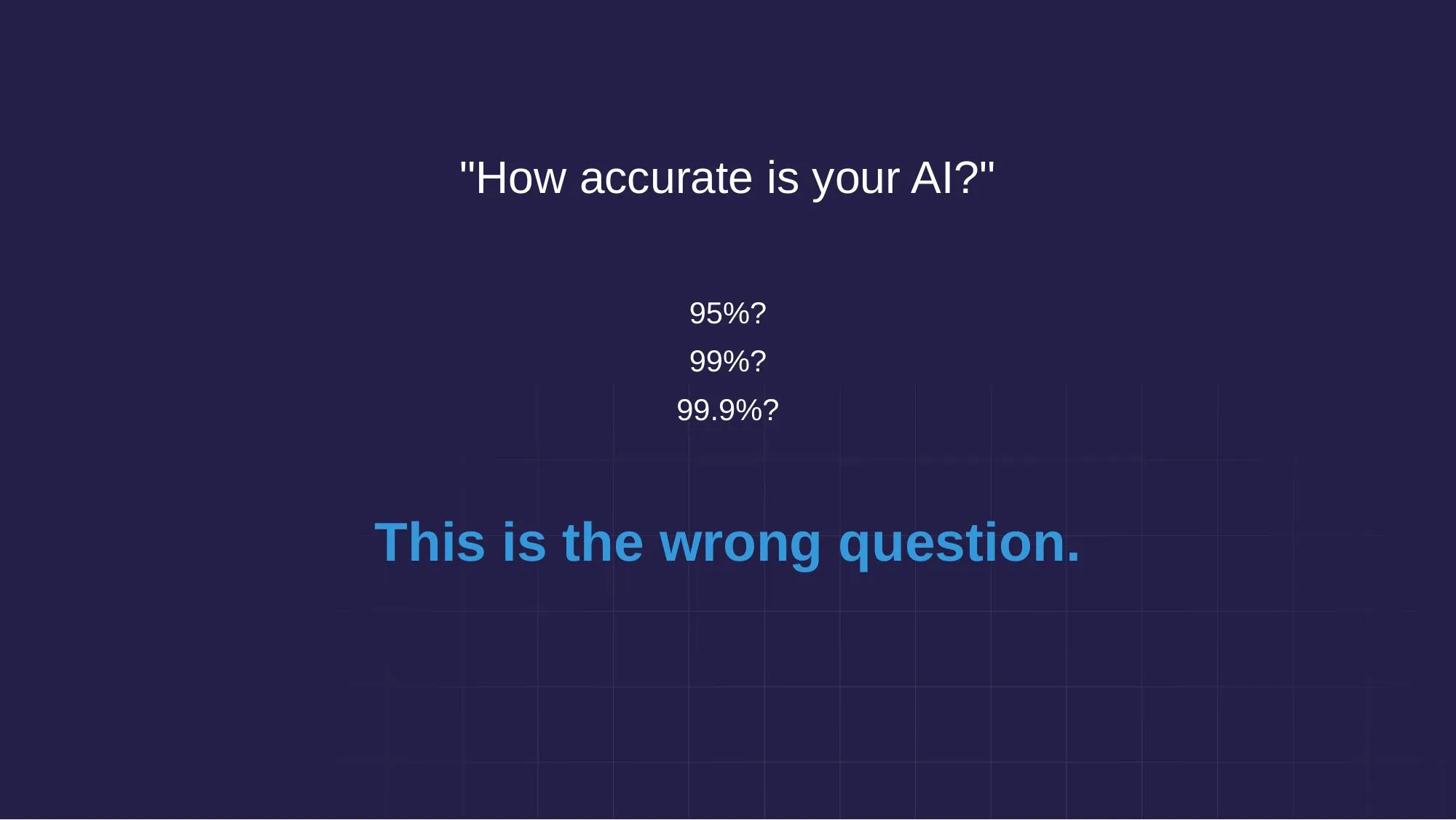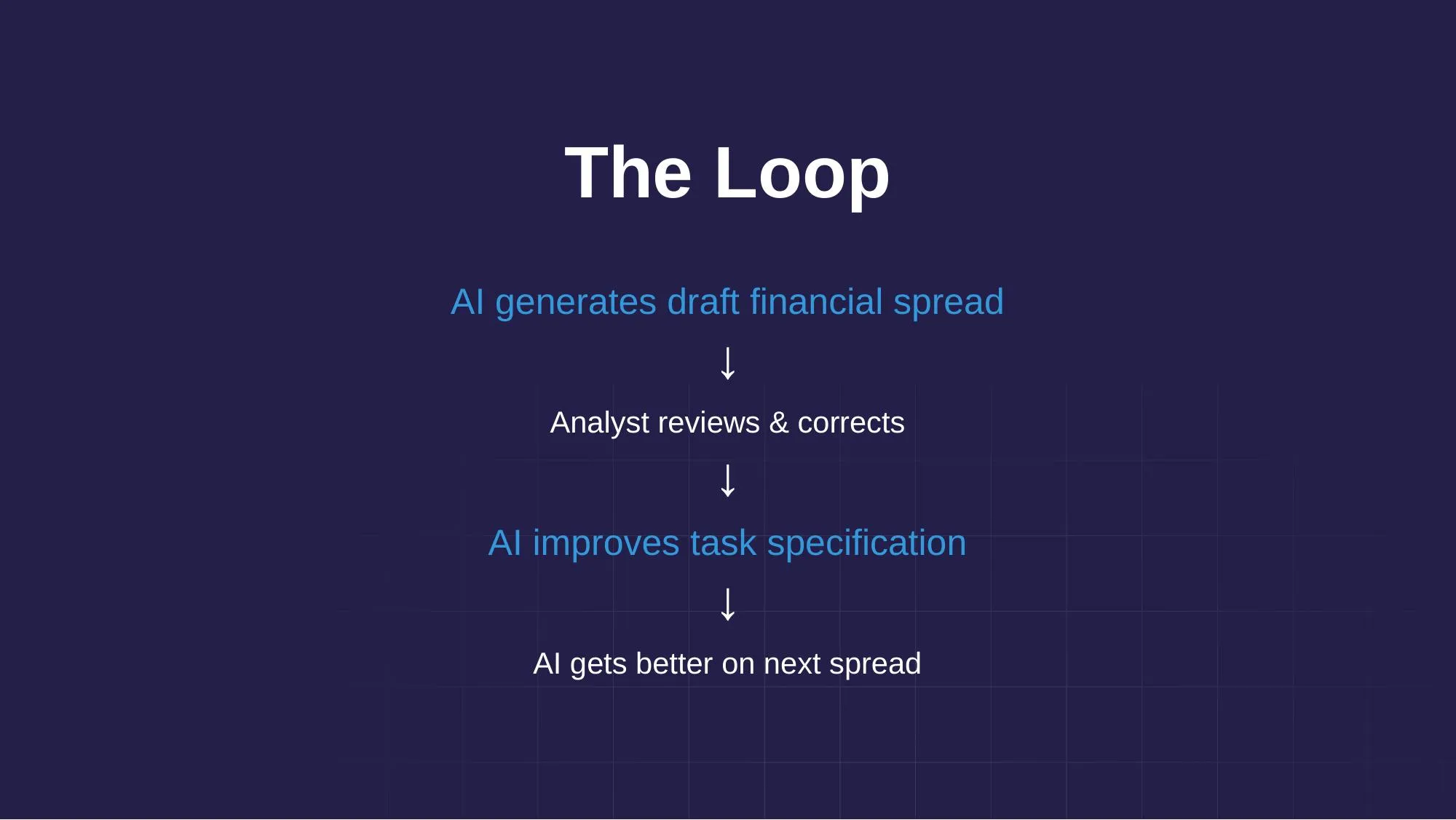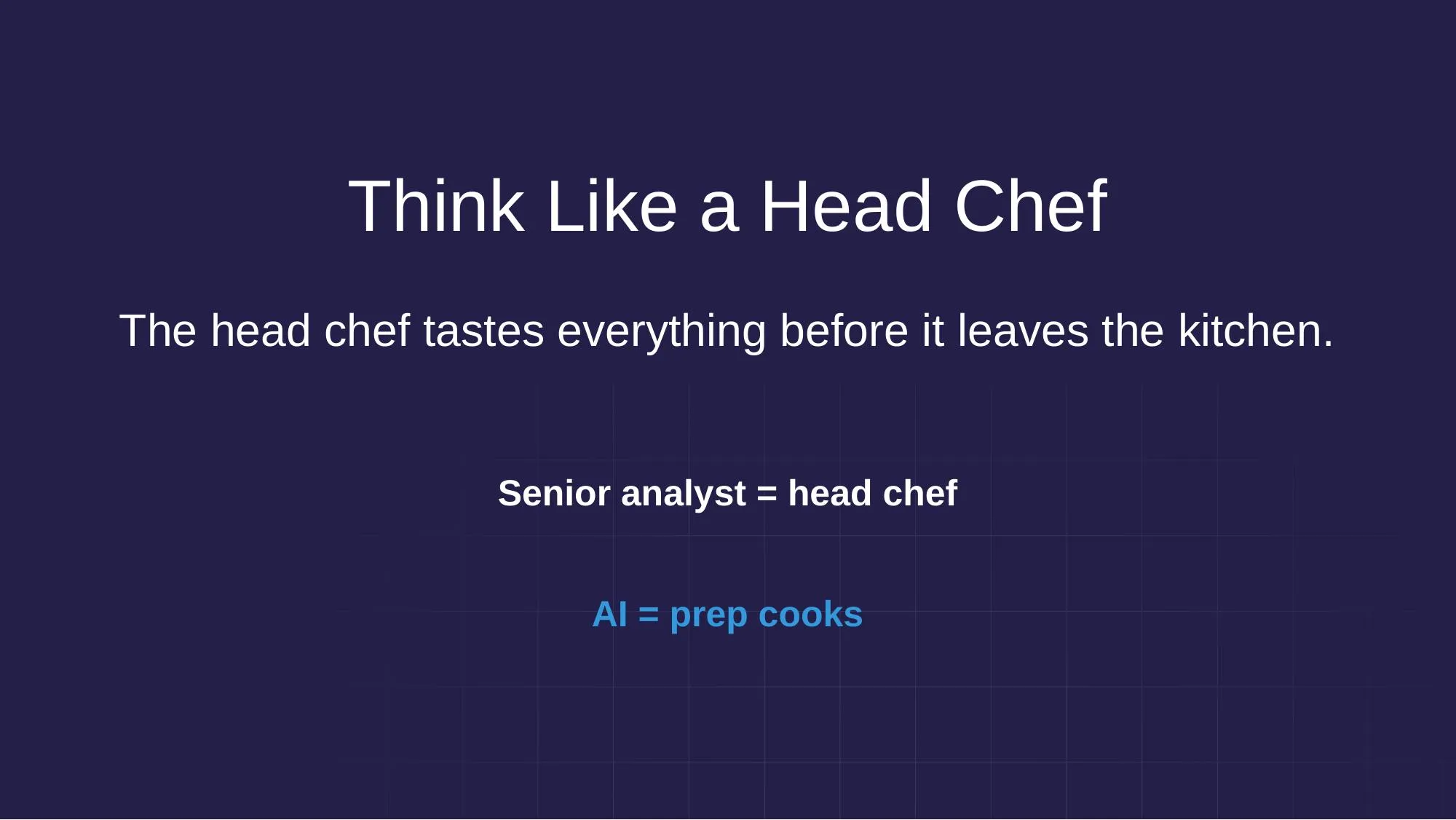A talk from the American Banker Small Business Banking conference, which brought together SMB bankers from Community Banks, Regional Banks, Credit Unions and service providers large and small
My talk covered how we achieved a 95% speed increase in financial spreading for SME Capital by asking the right question
Thanks to everyone who came up afterwards to share what you’re working on. These conversations are always the best part.
Why Human-in-the-Loop Changes Everything
For years, I’ve been obsessed with what seemed like an impossible task: automating financial spreads for complex, multi-entity SMBs. As co-founder of Sea.dev, an AI-native SMB underwriting system, this was my white whale.
We were working with a lender doing 5-year cashflow term loans of $500k-$2 million for complex asset-light businesses. Every month, their analysts spent 35 hours per person on covenant checks, manually spreading non-standard management accounts with subtle discretionary adjustments that didn’t fit traditional rule-builder systems.
It couldn’t be done. Until this year.
The Breakthrough

Working with SME Capital, we achieved something that seemed impossible:
Before: 35 hours per analyst per month
After: 2 hours per analyst per month
That’s a 95% speed increase.
Same people.
Same credit quality.
Human review of every single financial field.
But here’s what’s remarkable: we didn’t achieve this breakthrough by building perfect AI. We achieved it by discovering we’d been asking the wrong question entirely.
The Wrong Question vs. The Right Question

For years, every conversation about AI automation started with: “How accurate is your AI? 95%? 99%? 99.9%?”
This is the wrong question.

The right question is: “How fast can your AI learn?”
If your AI can learn fast, you quickly start moving toward value, regardless of where you start. Human-in-the-loop feedback is the unlock that makes this possible.
The Loop That Actually Works

Here’s the simple but powerful process that transformed everything:
- AI generates draft financial spread from the latest financials
- Analyst reviews & corrects any errors or adjustments
- AI improves task specification based on the feedback
- AI gets better on the next spread
- Repeat
This creates a compounding feedback loop. A single pass is just a task, but repeating this process builds both accuracy and trust. The analyst gains insight into where the AI fails, while the AI continuously improves its understanding of the specific requirements.
The Paradigm Shift
Old model: Wait until AI is “accurate enough” to deploy in full automation
New model: Deploy at 80% accuracy, let analysts correct the remaining 20%
Result: You’re learning from day one
This changes everything. It means you can work with:
- Small portfolios
- Edge cases
- Your specific credit policies and risk frameworks
- Your unique workflows
The best part? You get usable value immediately.
What Stops (Good Riddance)
With this approach, analysts stop doing the soul-crushing work:
- ❌ Manual copy-paste into credit systems
- ❌ Reading bank statements line by line
- ❌ Chasing missing documents
- ❌ Reconciling data formats
What Stays (The Important Stuff)
The human judgment that actually matters:
- ✅ Understanding the business
- ✅ Managing relationships
- ✅ Maintaining trusted risk structures
- ✅ Working with trusted teams
- ✅ Making the final call
Think Like a Head Chef

The best analogy I’ve found is this: The head chef tastes everything before it leaves the kitchen.
- AI = prep cooks (fast, capable, but need direction)
- Senior analyst = head chef (final authority, reputation on the line)
The chef’s reputation is on the line. The chef has final say. This should feel empowering, not threatening. You’re still in charge—you just have unlimited bandwidth.
The Surprise Discovery
Everyone says “start with simple, repetitive tasks.” We found the most value with our hardest problem: complex, multi-entity consolidation.
Why? Because feedback loops matter most with complex tasks. Simple tasks require huge scale for improvements and plateau quickly. Hard tasks benefit the most from human-in-the-loop learning, which compounds over time.
The Trust Factor
What surprised us most was how quickly trust built between analysts and the AI system. When people can see errors in minutes and watch the system improve based on their corrections, they move from skepticism to advocacy incredibly fast.
The 95% speed increase wasn’t just about technology—it was about the team rapidly building confidence in a system they could control and improve.
Your Action Plan
Ready to try this approach? Here’s your homework:
Pick ONE tedious task that:
- Happens repeatedly
- Takes 30+ minutes
- Your team hates doing
Then:
- Give AI the first pass
- Have someone review it
- Track what gets corrected
- Feed corrections back to improve the AI
Do this for just 10-20 iterations. You’ll be surprised at the results.
The Critical Success Factors
For this to work, you need three things:
- Could my senior people spot errors in minutes? (Fast review capability)
- Could I track correction rates? (Measurable improvement)
- Could the AI act on the corrections? (Actionable feedback loop)

If any of these is missing, the loop breaks down. Our Feedback Loop features make it easier to get all three right. That’s where we unlock huge value.
Read about feedback loops here →
The Bottom Line
Customer expectations have already changed. Your clients have used ChatGPT. They expect faster, better service.
The question isn’t whether AI will change your industry—it’s how you harness it while keeping humans in control.
Stop asking: “Is AI accurate enough?”
Start asking: “Am I creating feedback loops?”
This is how trust compounds. This is how you build systems that get better every day. And this is how you transform impossible tasks into solved problems.
Takeaways:
⚡️ Stop asking: “Is AI accurate enough?” Start asking: “Am I creating feedback loops?”
🔥 The breakthrough came from tackling the HARDEST problem first: complex, multi-entity SMBs.
👨🍳 Think like a head chef: Your senior analysts taste everything. AI does the prep work.
💡 Manual copy-paste stops. Understanding the business and making the final call stays.
Questions from the Audience
Q: What documents can this handle?
A: Complex messy management financials, tax documents, income statements, balance sheets, cashflow statements, Accounts Receivable and Payable. The system is designed specifically for the non-standard, complex documents that traditional rule-based systems struggle with.
Q: What opportunities does this open up?
A: Cross-sell opportunities, proactive outreach to customers, and most importantly—more time to investigate risk and spot fraud. When analysts aren’t buried in copy-paste work, they can focus on the high-value judgment calls that actually matter.
Q: Can you layer in other data sources?
A: Yes, credit reports, bureau data, and industry insights. These are all part of our product scope. The human-in-the-loop approach works across all data sources, not just financial documents.
Q: Can the AI request data from borrowers?
A: Yes, this is one of our core features. We see analysts lose the most time on two things: copy-paste and “doc chase”—where analysts need to email or call borrowers, request additional documents, compare and reconcile data, and then copy-paste it all. Our system can handle both of these pain points.
Q: Are you training your AI on customer data?
A: No, we’re using AI feedback to improve task specification, not training the AI itself. You don’t need to “train AI” to get incredible results, but you do need an incredibly well-specified task. This is no different from humans—if you give a human a loosely defined task, you can hardly blame them for a poor outcome.
The secret is using human feedback to continuously refine how we specify the task, not changing the underlying AI model. This approach is faster, more secure, and doesn’t require massive datasets.
Matt Arderne is co-founder of Sea.dev, building embedded AI for SMB credit underwriting.
Want to learn more about how we achieved these results? Read the full SME Capital case study
Interested in discussing feedback loops, complex spreading, or what we’re learning? Get in touch to book a demo
